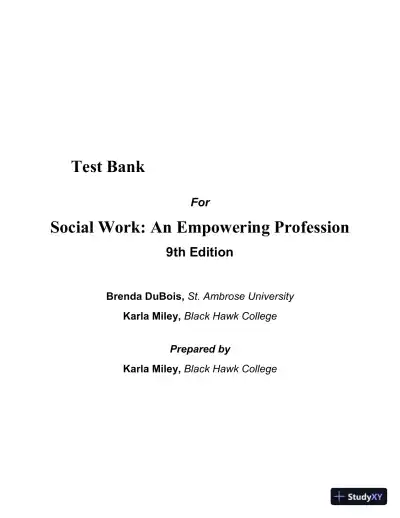Page 1

Loading page ...
Maximize your study time with Social Work: An Empowering Profession, 9th Edition Test Bank, featuring a range of exam questions and answers for rapid review.

Loading page ...
This document has 185 pages. Sign in to access the full document!